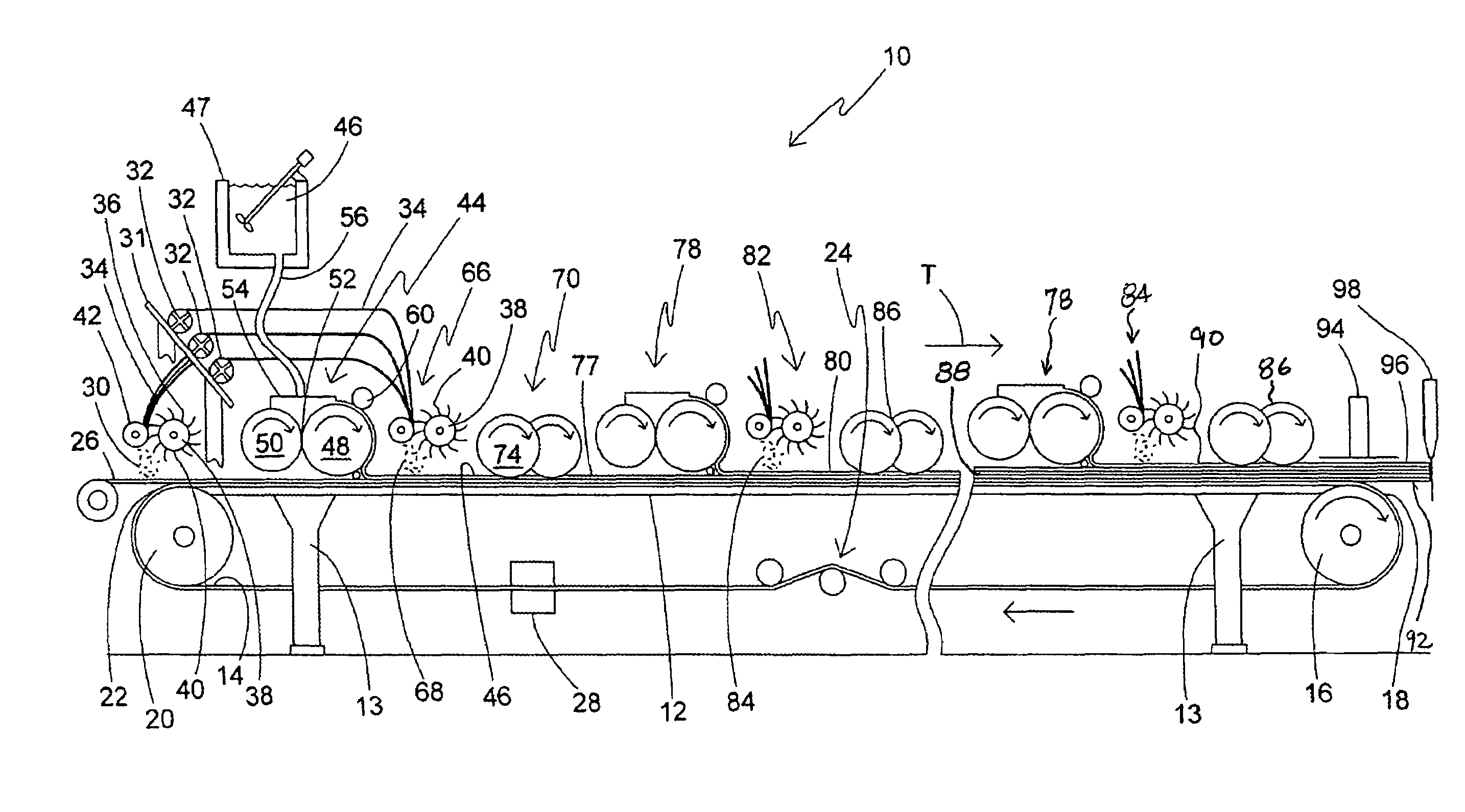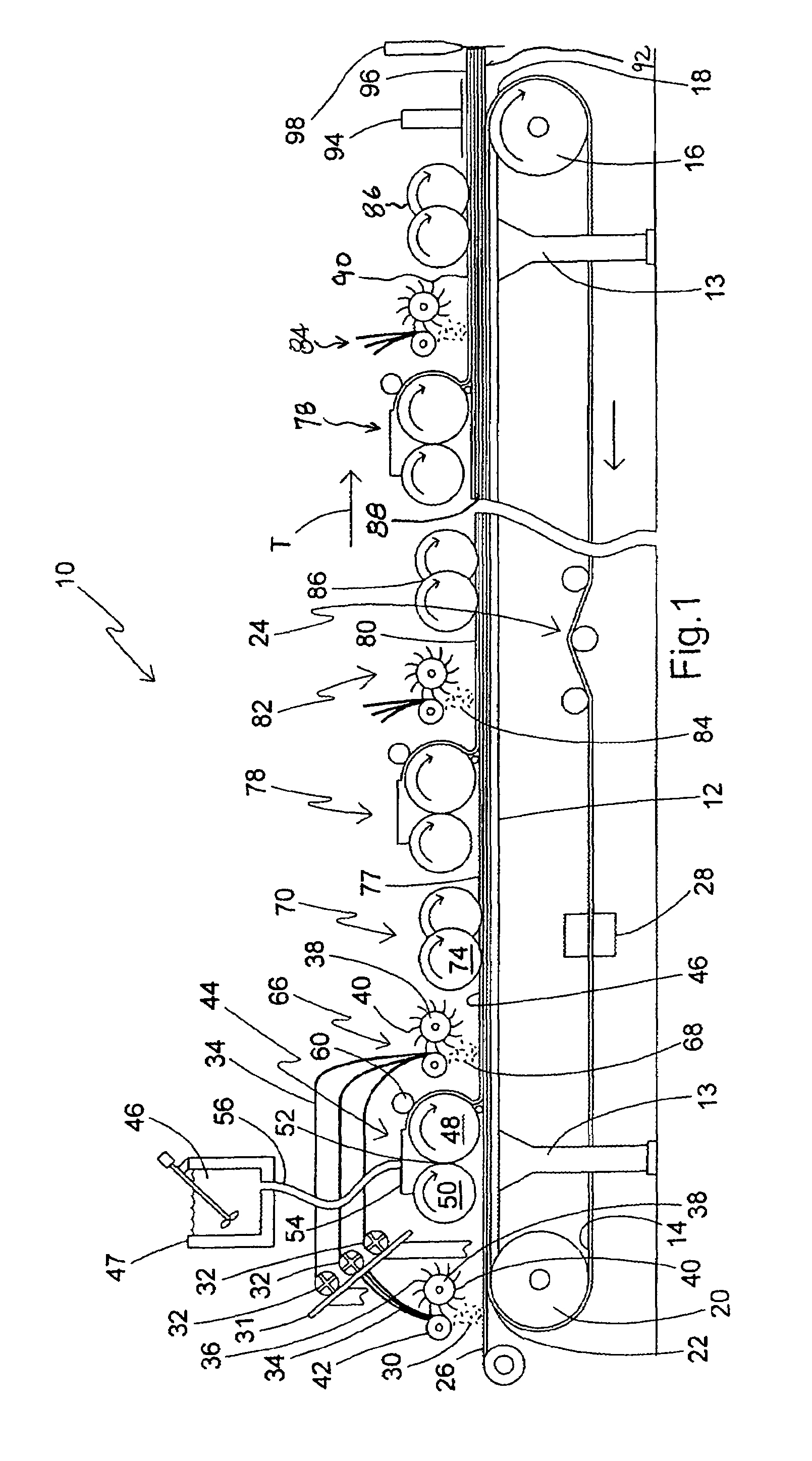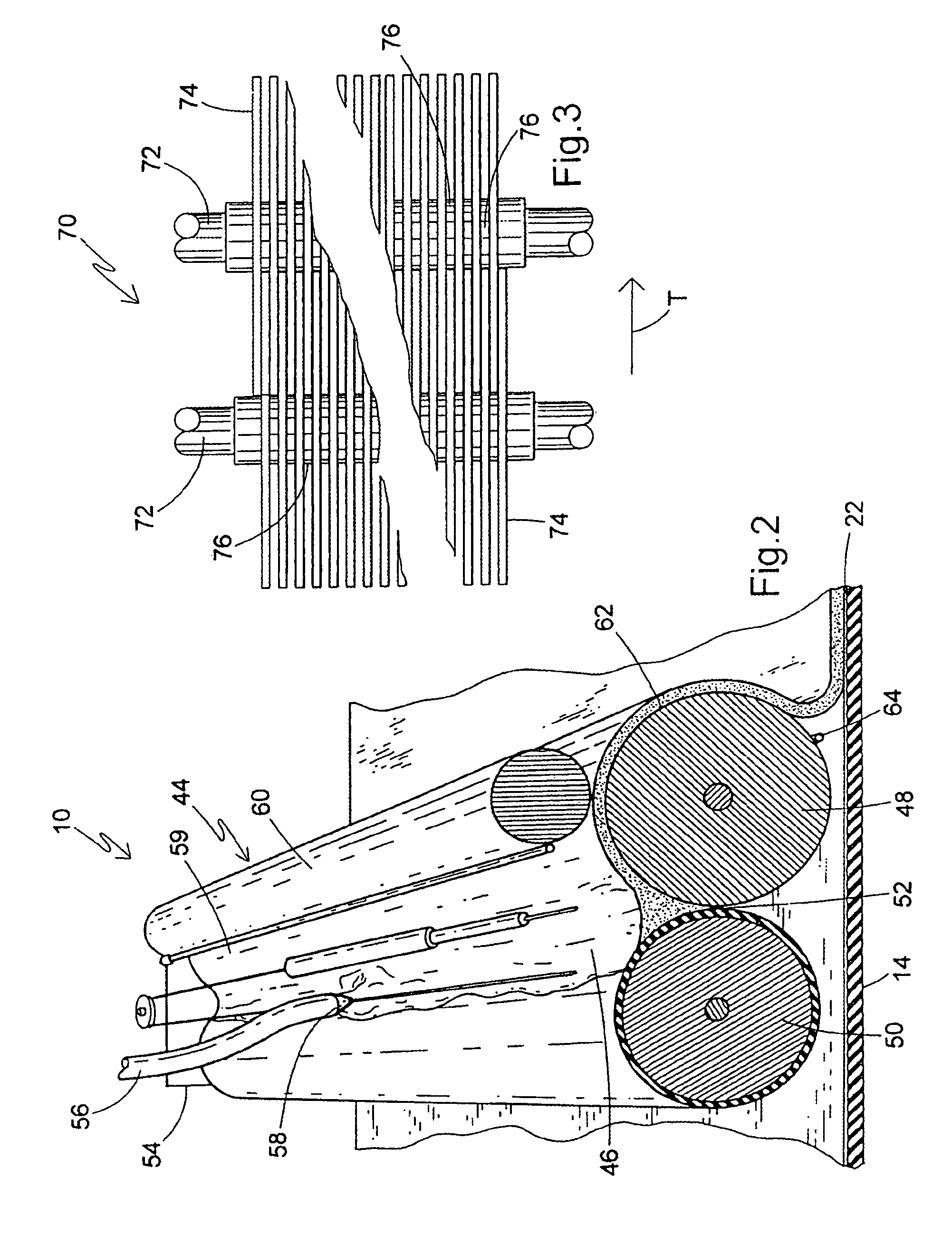Multi-layer process for producing high strength fiber-reinforced structural cementitious panels with enhanced fiber content
a technology of reinforced cementitious panels and fiber content, applied in the field of multi-layer processes for producing reinforced cementitious panels, can solve the problems of low panel strength development, insufficient structural strength, and insufficient and uniformity, and achieve the effect of enhancing strength characteristics and reducing production equipment and processing tim
- Summary
- Abstract
- Description
- Claims
- Application Information
AI Technical Summary
Benefits of technology
Problems solved by technology
Method used
Image
Examples
examples
[0123]Referring now to FIG. 4, a fragment of the panel 92 produced according to the present process and using the present system is shown to have four slurry layers, 77, 80, 88 and 90. This panel should be considered exemplary only, in that a panel 92 produced under the present system may have one or more layers. By using the above mathematical relationships, the slurry layers 77, 80, 88 and 90 can have different fiber volume fractions. For example, skin or face layers 77, 90 have a designated fiber volume fraction Vf of 5%, while inner layers 80, 88 have a designated Vf of 2%. This provides a panel with enhanced outer strength, and an inner core with comparatively less strength, which may be desirable in certain applications, or to conserve fibers for cost reasons. It is contemplated that the fiber volume fraction Vf may vary among the layers 77, 80, 88, 90 to suit the application, as can the number of layers.
[0124]Also, modifications of the fiber content can be accomplished within...
PUM
| Property | Measurement | Unit |
|---|---|---|
| volume fraction Vf | aaaaa | aaaaa |
| thicknesses | aaaaa | aaaaa |
| thickness | aaaaa | aaaaa |
Abstract
Description
Claims
Application Information
 Login to View More
Login to View More - R&D
- Intellectual Property
- Life Sciences
- Materials
- Tech Scout
- Unparalleled Data Quality
- Higher Quality Content
- 60% Fewer Hallucinations
Browse by: Latest US Patents, China's latest patents, Technical Efficacy Thesaurus, Application Domain, Technology Topic, Popular Technical Reports.
© 2025 PatSnap. All rights reserved.Legal|Privacy policy|Modern Slavery Act Transparency Statement|Sitemap|About US| Contact US: help@patsnap.com



